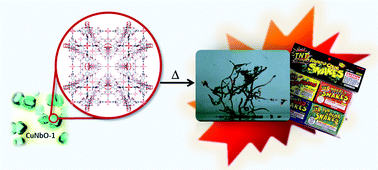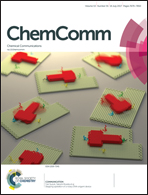Thermal decomposition pathways of nitro-functionalized metal–organic frameworks†
Abstract
The decomposition behavior of high energy metal–organic frameworks (MOFs) with extensive nitration is disclosed. In contrast to the detonation behavior observed in molecular energetic compounds, deflagration transforms cubic MOFs into anisotropic carbon structures with highly dispersed metal. Both the structural metal and intimate mixing are found to be critical.



 Please wait while we load your content...
Please wait while we load your content...